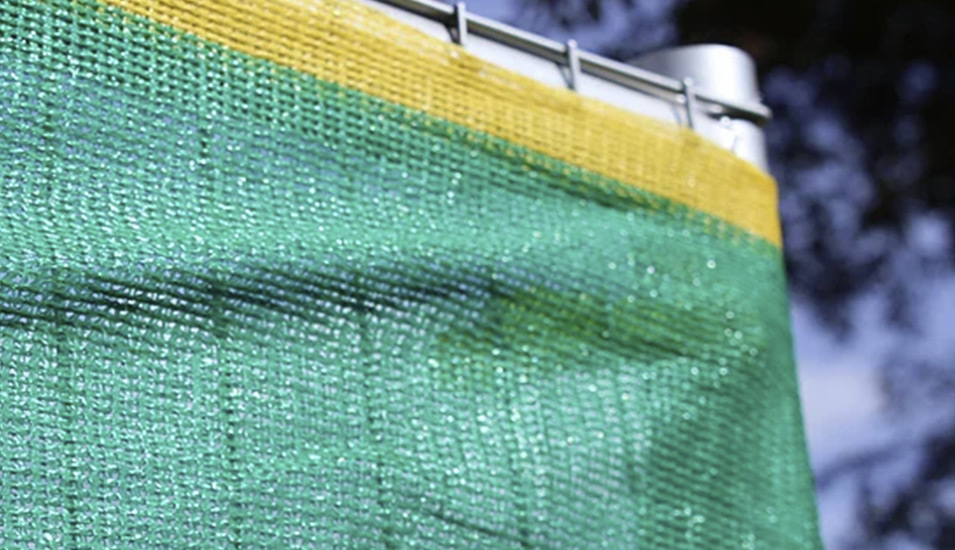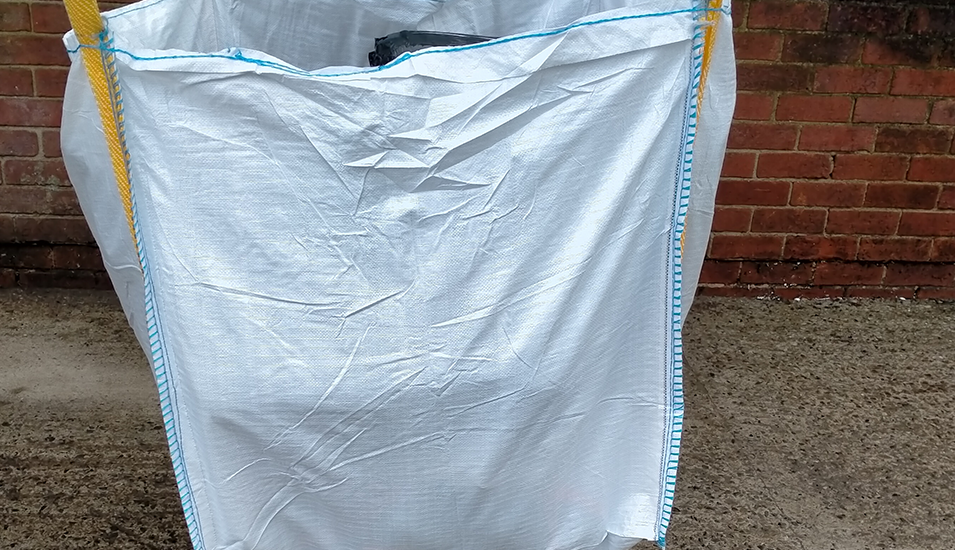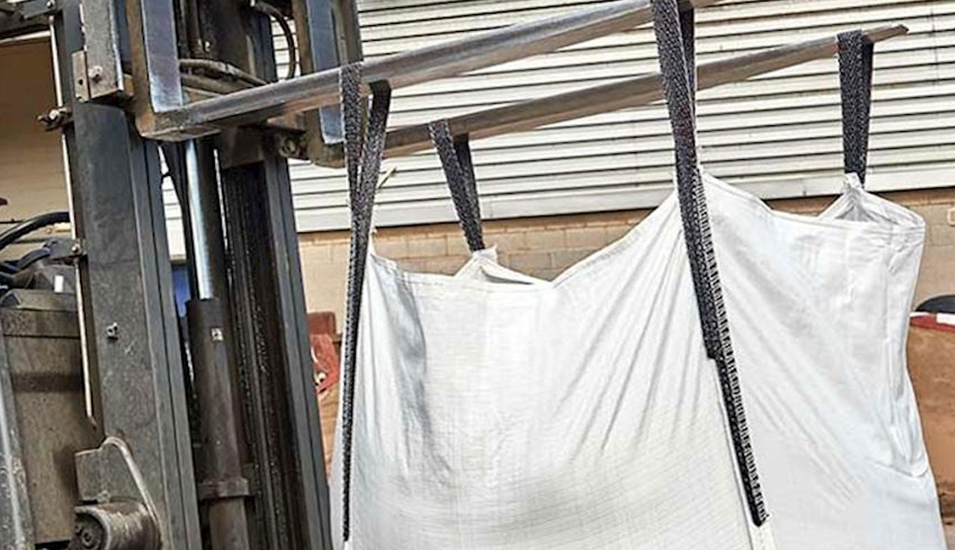
Debris netting protects people and traffic from falling debris on or near construction sites. It can be any netting that attaches to a structure such as rocks, pilings, scaffolding or anything on the shoreline. If you work in the construction industry, you will probably use it at some point. But how do you know which type or strength to use? Here’s a beginner guide to debris netting.
Table of contents:
What Is It Made Of
Debris netting is a mesh material mostly used for scaffolding enclosures within a construction setting. It’s made from high density polyethylene which is a common type of plastic. It also contains UV inhibitors which work by preventing degradation to the material, basically helping to protect from the sun’s radiation. You’ll find out how to use it further into this beginner guide to debris netting.
Typically, you can measure construction debris netting by its weight per square metre, which can range from 150 to 870 kilograms. What you buy depends on how heavy the loads are that the netting is supporting. As well as how many workers or members of the public are moving along when you’re using it.
Debris netting is usually green to make it highly visible. But sometimes when it’s on high profile buildings, there could be netting that shows the facade of the building behind the material or details of the project.
Now think of a construction site. There’s a lot of debris from building new homes or demolishing a site that needs to be taken safely away. However, if debris falls from a height, it can cause the risk of serious injury or even lead to a fatality. That’s why it’s essential to identify the need for debris netting as soon as possible, certainly within the planning stages of a job.
How Strong Is Debris Netting
The strength of the debris netting you choose depends on the job you are doing and the loads it will need to carry. Debris netting comes in various lengths and strengths. The most common strength is netting for light debris which has a 16 x 16 weave.
Meanwhile, if you have larger and heavier loads, you may need netting with a 14 x 14 weave. Other strengths are available.
Whatever size you choose, construction debris netting is strong and durable and also comes in bright, visible colours. Depending on your safety measures, you can use it more than once. However, if there is damage to it or it’s no longer fit for purpose, you need to replace it as soon as possible.
To maintain debris netting, you should have a schedule in place to check it’s effectiveness. You can also clean it with a stiff broom to get rid of any heavier dirt which may impact its strength. Next in this beginner guide to debris netting is to learn about its effectiveness.
How Long Is It Effective
Generally speaking, debris netting is effective for up to two weeks. However, if there is an incident which causes damage to the netting, then you should replace it. Perhaps a large rock causes a rip or tear in the netting. Then there is the risk of a smaller item of debris falling through the tear and onto a person below. Therefore, replace it straight away.
Always check the safety requirements of your workplace or site. In some places, you may be able to use debris netting multiple times, depending on your safety measures. Whereas at other sites, the safety planning may require you to replace the netting every two weeks regardless of any damage.
Beginner Guide To Debris Netting: How To Attach It
To attach debris netting to the structure, you need to use debris netting straps. These are also available in different thicknesses and lengths depending on what you need. For example, you can get debris netting straps in 8mm or 12mm thickness. Your choice depends on the type of debris you working with. The netting material has eyelets on the edges which means you can quickly and easily attach it using cable ties or netting straps.
The person responsible for the site must check that the netting is in the right place to capture any falling debris, that it’s safe to use and won’t fall or fly off the structure.
Benefits Of Using Debris Netting
There are many benefits to using debris netting, as well as safety protection. For example, it’s versatility means it’s easy to handle and you can hang it either vertically or horizontally. Moreover, it’s easy to attach to a scaffold thanks to the eyelets and cable ties.
As well as this, the material allows air to move through it, a bit like a windbreaker on a beach. So it can protect you from the elements, while also providing ventilation. In a similar way, it protects you from bright sunlight, but allows enough light in to see what you are doing.
When To Use Debris Netting
Debris netting is often put up alongside scaffolding on a construction site. Obviously the purpose is to capture falling debris. In addition to this, it helps to keep workers safe from weather conditions, such as high winds and dust, and other hazardous situations.
Scaffolding provides a means of access to working platforms and may support the structure or building itself. Therefore, people working with scaffolding face many hazards. For example, the risks include;
- Falling from height
- Heat, rain or high winds affecting the anchor bolts, fixing or tubing
- The scaffolding collapsing
- The anchorage for the scaffolding moving or weakening
- Debris from a higher platform falling onto scaffolding or a person below.
Hence debris netting is an essential part of your fall protection and safety planning on a construction site.
Where To Put Debris Netting
To identify where you need to put the debris netting, first have a look around the site and make a risk assessment. Look particularly at where debris could fall to the ground or onto a person. For example, it could fall through a hole in the roof or wall, or from a window down onto someone below if you’re on a higher platform.
Could it fall from any edges? Or could the debris from your building site fall onto a nearby building in the area where you are working? Have you considered all the surrounding buildings and can you create a safe zone?
Can Debris Netting Prevent Falls
Debris netting on scaffolding is part of your fall safety planning, but should not be relied upon to prevent a fall from height. It does have enough strength to catch and support a falling person, but that’s not the main purpose. Ideally, it’s designed for catching falling debris.
Therefore, in terms of reducing the impact of a fall on a worker, you need other fall safety protection in place. In fact, this is called a fall arrest system. A fall arrest system absorbs the impact of a fall from someone who is already in free fall. It doesn’t prevent the fall itself, but it does reduce the impact of serious injury. A fall arrest system legally requires a fall safety and rescue plan and a nominated competent person to rescue the fallen worker.
Hence debris netting is not suitable for this situation.
How Quickly Should You Remove Debris Netting
Generally speaking, part of your safety planning is to remove any debris caught in the netting as soon as possible. This is because it continues to be a danger to workers or people walking near the netting, in case the weight of the debris breaks the net.
If members of the public are walking past your scaffolding and some of your netting breaks or tears, they are at risk of serious injury. The responsibility rests with the person who erected the debris netting and the person in charge of the site. Therefore, it’s in your best interests to remove any debris safely as quickly as you can.
Buying Debris Netting from QUBE
QUBE UK supply debris netting from their base in the UK. The company specialises in debris netting, FIBC bulk bags and cable ties.
The debris netting from QUBEUK comes at a length of 2M x 50M. A single product is £29.99 and a pack of 5 is £145.99. A pack of 10 is £279.99 or a pack of 40 is £1079.99. The netting is green in colour and weighs 6kg per pack.
Made from durable, heavy duty plastic, it’s ideal for use on scaffolding to protect pedestrians and traffic. Furthermore, the nets allow air circulation and dramatically reduce rain and wind penetration. Thus creating a better working environment for construction workers.
You can also use QubeUK debris netting for gardens and as a windbreak cloth. By placing the brake on dangerous gusts in winter, and protecting greenhouse seedlings and plants in mid summer.
How Much Debris Netting Should I Get
How much netting you need depends on the specific requirements of your site, in terms of health and safety, risk assessment and planning. In this beginner guide to debris netting, here are the things you should look out for:
- how much debris will you have to deal with
- what is the size of the area around where the debris could fall
- how often do you think it’s possible for debris to fall
- how many people are working on the site
- is there any debris netting already in place and has this been checked.
Finally, once you have the debris netting in place, make sure you have a schedule to maintain and assess it regularly and to replace it if required. The safety of the netting is a priority as people are risk it it’s not properly secured or damaged.
What’s The Difference Between Vertical And Horizontal Netting
Before choosing the type of debris netting for your site, you need to know the difference between vertical and horizontal netting. Ultimately, it about the way in which you hang them.
For example, vertical debris netting is useful when you’re working on a tall building. It’s easy to install and keeps debris from falling on people below or onto structures or buildings that are next to your project. Furthermore, vertical netting is also useful as a partition during demolition projects.
Meanwhile, horizontal netting is often hung at various heights when working. It also helps to protect people. Another benefit to debris netting is that it’s flexible and easy to work with and hang where you need it to fit.
Is Debris Netting Fire Retardant and Waterproof
Not all debris netting is fire retardant so it’s always worth checking before you buy or hire it. Fire retardant netting often has reinforced edges and is made of non flammable material. Ask your provider before you purchase the netting.
However, It provides excellent protection in all weathers. The polyethylene material contains UV protection for exposure to sunlight and is also water resistant.
Hence it’s not just useful for the construction industry. Debris netting is also used in agriculture and gardening to protect plants and keep animals out.
Whose Responsibility Is It To Look After Debris Netting
In the construction industry, there is a management of risk when it comes to planning work. As debris netting is an additional safety measure, it’s the responsibility of both the person putting up the netting as well as the site manager to ensure its in safe working order.
According to the Health And Safety Executive, duty holders or site controllers need to adhere to the following list when planning jobs;
- Identify jobs that involve work at height and plan the work to ensure appropriate precautions are in place.
- Have a risk assessment in place that applies the Work At Height Regulations hierarchy.
- Organise procedures to select correct equipment and ensure that the equipment is properly used.
- Communicate risk control measures to the workforce
- Ensure workers are competent to use the equipment that has been correctly installed/assembled
- Arrange inspection and maintenance of equipment as appropriate.
Therefore, you may identify that debris netting is required at step 1 when it comes to planning the job. The next step is to assess the risks of debris falling and where you might need it in place. Step 3 includes selecting the right length and strength of netting required.
In Step 4, you need to tell workers where the debris should go and how to attach it to the structure. Next, you identify a competent worker or workers to put up the debris netting and ensure it’s set up correctly. Step 6 includes selecting an appropriate person to maintain and inspect the equipment after each use.
Hierarchy Of Control When Working At Height
When any work at height takes place there is a hierarchy of control measure. So before using any fall protection or safety equipment including debris netting, the site manager or owner must consider the following in order;
- can you avoid working at height, is there a different way to do the work
- is there an existing safe place to work
- if you have to work at height, the provide equipment to prevent falls
- mitigate for the distance and consequences of a fall
- Give instruction and training for use of equipment
As well as this, collective protective measures take priority over personal protection. Hence scaffolding takes priority over a personal lifeline or body harness for example. As debris netting protects several people at once from falling debris, this is a collective measure rather than a personal one.
Other collective measures when it comes to fall protection include guard rails, protective screens and safety zones.
Responsibilities After Using Debris Netting
So while looking through this beginner guide to debris netting, you may need to know what to do when you’ve finished with the netting. If you don’t need it any more, the first thing to do is to remove any debris safely. Once the debris has been removed, you should inspect the netting for any damage to check if it’s safe to use again.
If there are signs of damage, then you should inform your site controller and remove and replace the netting. If it’s in good, clean condition you can reuse the debris netting to put up again.
Safety Standards
Debris netting used for scaffolding must adhere to a number of standards. These include the Construction Regulations (CDM 2015) and Management of Health and Safety Regulations (MHSW 1999).
This legislation outlines that clients, main contractors, designers and users have a duty to consider the risks to the general public and to control those risks throughout the life of a project.
If you’re the person responsible for the site, then you must identify the risks as soon as possible, from the enquiry stage to the planning stage. For example, risks may include building the scaffolding in the first place and then dismantling it at the end of a job. Further risks include managing traffic, especially if the scaffolding extends over or into a road. What signage are you going to put up to ensure the traffic avoids the scaffolding and keeps your workers safe?
As well as this, you need to think about lighting. Bright green debris netting helps visibility, but in the dark, you need proper lighting to alert people that the structure is there.
When The Public Are At Risk
Every project must be risk assessed on its own merits and environment. For example, you may have scaffolding attached to a care home while repairs take place. This may cause a pavement lift which in turn creates a fall risk because the pavement is no longer flat.
Another example is scaffolding at a school. You could have made this as safe as possible, but with several children running around, there’s still a risk that they could knock the scaffolding and something falls. Once again, this is where debris netting can make an essential difference to the safety of your site.
If the scaffolding is erected along a public street, it may jut into the main road. In which case the walkway is set up for pedestrians underneath the scaffolding. Therefore there should be equipment in place to make the structure above safe, as well as the floor below on which people are walking. Another risk is if people try to overtake each other in a limited space. If one person overtakes onto the road, they run the risk of being hit by traffic or by potential falling debris.
Typically, construction debris is extremely heavy. If debris does fall onto the road or pathway below, it can cause serious injury or even fatality.
Main Control Measures For Scaffolding
When it comes to control measures for scaffolding, then debris netting comes under that heading.
Other control measures are;
- pedestrian segregation, such as hoarding or guard rails
- exclusion zones
- out of hours working
- pavement scaffolds
- protection gantries
- debris and safety netting
Conclusion: A Beginner Guide To Debris Netting
To sum up, in this beginner guide to debris netting, there are many benefits to it of course, but the main one is to protect your workers and other people from falling debris. This is a collective measure which can protect several people instead of just one person. You can use debris netting alongside other safety equipment to reduce the hazards as much as possible. Clearly, you don’t want any debris to fall on site. But if it does, the netting will catch it before it falls on anyone below, causing serious injury or even fatality.
Related Articles

Why and How Debris Netting Makes Your Construction Site Safer
In this article we look to explore why and how debris netting makes your construction site safer. Construction sites can…


